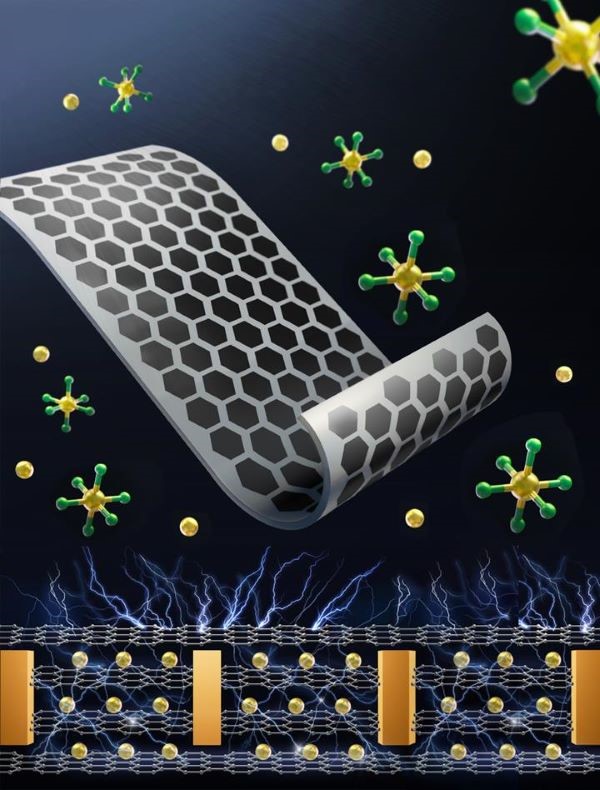Prof. Shim Jun-Seob Develops High-Performance Lithium-Ion Battery with Graphene Films
- admin
- 2024-12-04
- 1138
Professor Shim Jun-Seob (Department of Electronics Convergence Engineering)
Develops High-Performance Lithium-Ion Battery Technology using
Graphene Films
- Applicable to high-energy density lithium-ion batteries with a long
lifespan and suitability for mass production -
- Selected as a cover paper in the journal Small Methods (JCR Q1
ranking, Impact Factor: 10.7) -
Professor Shim Jun-Seob
(Department of Electronics Convergence Engineering) and his research team at
Kwangwoon University have developed an innovative lithium-ion battery anode
material using graphene. This research involved using a polymer as a supporting
material to create graphene films, which were then utilized as anode materials
to develop lithium-ion batteries. The developed graphene anode material plays a
crucial role in stabilizing the graphene structure, resulting in a longer
battery lifespan. It also provides vertical pathways for electron and ion
movement, significantly enhancing the overall performance of lithium-ion
batteries. This technology is cost-efficient and scalable for mass production,
making it a promising candidate for next-generation battery materials.
The research findings were selected as a cover
paper in Small Methods, a world-renowned SCI journal in the field of electronic
materials.
(Reference
: https://onlinelibrary.wiley.com/doi/full/10.1002/smtd.202400189)
With the recent surge in demand for electric vehicles and portable
devices, the need for high-performance batteries has grown significantly. Graphene
anode materials exhibit high electron mobility and ion conductivity. However,
when graphene is fabricated into a film, it often fails to maintain its
structure and is prone to breaking easily. Therefore, it is challenging to
mass-produce graphene in film form for use as an anode material in lithium-ion
batteries. Additionally, when applied to batteries, graphene tends to break,
leading to a shorter lifespan.
Professor Shim Jun-Seop's research team addressed these issues by
developing a graphene-polymer film, where graphene is robustly formed on a
hexagonal polymer structure as a support. The developed graphene-polymer film
demonstrated high electron mobility and ion conductivity in the vertical
direction, proving through experiments that it ensures both high battery
efficiency and a long lifespan. Additionally, as a self-supporting electrode
that does not require a binder, it is cost-effective and reduces the weight of
the battery. The graphene-polymer film developed in this study achieved a
capacity of 581 mAh/g as a battery anode material and maintained 80% of its
capacity even after over 400 charge-discharge cycles. This performance
surpasses that of existing lithium-ion battery technology and is expected to
significantly contribute to the advancement of next-generation battery
performance.

@ High-performance lithium-ion battery technology using
graphene-polymer film
Professor Shim Jun-Seop stated, "Graphene, often referred to as a
'dream material,' possesses various properties such as conductivity, mechanical
strength, and thermal conductivity, making it a highly promising material for
next-generation electronic devices and energy storage systems. The graphene
anode material developed using graphene-polymer film technology is expected to
further maximize these properties and significantly enhance the performance of
lithium-ion batteries."
Meanwhile, this research was supported by the Super-Gap Startup
1000%%1%% Project (DIPS 1000%+%)
and Kwangwoon University's internal research funding. The results were
published as a cover article in Small Methods (JCR Q1 ranking, Impact Factor:
10.7), a prestigious international journal published by Wiley-VCH.
https://www.kw.ac.kr/ko/life/research.jsp?BoardMode=view&DUID=48451?